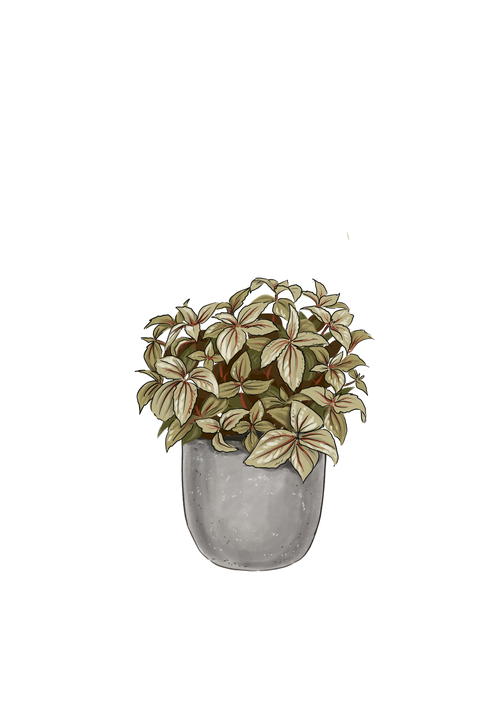Pilea Bronze Care Guide

-
Light : Medium
This plant does well in a northern or eastern facing window in medium, indirect light. In a southern or western exposure, it can get too much light and get crispy or dry out faster.
-
Water : Medium
Keep the soil slightly moist and bottom water when the soil reaches #5 on the moisture meter. Use filtered, bottled, or tap water sitting 24 hours to release the chemicals and water enough to discharge out of the drainage holes. Pilea's do not like chlorination. Once the water is fully drained, place her into the cache or decorative pot. Don't let her roots sit in standing water or in the saucer. Water less frequently during the winter months but keep it humid around the plant. This plant is perfect for a terrarium where the soil and humidity are kept consistent.
-
Humidity : High
Add up to 60% humidity by adding a pebble tray filled with water, grouping with other plants or using a humidifier.
-
Temp : 72℉ - 85℉
Avoid drafts or too much direct light on this plant or the leaves will dry out.
-
Zone : 10|11
If grown outside in warmer climates, use as an annual. Place her in early morning indirect bright light or shade garden as a ground cover. Bring inside if temps dip below 70°F.
-
Fertilizer : Every two weeks
Fertilize when watering twice a month in the spring and summer with an organic water-soluable fertilizer.
-
Repotting : 2 Years
When receiving the plant, do not repot immediately but wait at least 6-12 months to acclimate to your environment. Repot in the spring, using a 2" wider pot. (Too large of a pot could cause the soil to dry slower, which is not helpful.) Use a well-draining indoor potting mix with perlite to help with drainage or an african violet potting mix. Place a piece of screening at the bottom of the container over the drainage hole to secure the soil and allow it to drain. Add soil to the bottom to elevate the root ball. Lift the plant and release the roots against the existing planter. Use a clean knife or garden trowel to wedge between the pot and the soil to loosen. Inspect the root ball. Notice if there are any dead or rotting roots and trim off with sterile pruners. If the plant is rootbound, cut through the roots to alleviate continued encircling. Ensure the plant is sitting about 1" below the edge of the pot to avoid water spillage. Add more soil and backfill around the sides by tamping down. Fill up to the soil line but not over. Water thoroughly, leaving the soil damp but not soggy. If settling occurs, add more soil. Enclose the new plantings in plastic bags, mist and keep them in medium light. Remove the plastic bag when the roots are established. You may observe some leaf changes as it acclimates to its new environment. It may suffer some transplant shock depending on how tight the roots were intertwined together. Trim off any declining leaves as it regains its energy and gets rooted into the soil over time.
-
Cleaning : As needed
As your plant grows, it may get a bit unshapely. Do some minor pruning if you want to keep it tight and less leggy. You can remove 20% of the stems, so it doesn't give it shock. Use sterilized pruners and clip back to the main branch. Use the clippings to propagate!
-
Propagation : Cuttings
These plants are like ground covers and will stretch across the soil and start to self-propagate by growing roots along the stems next to the mother plant. You can separate these with sterilized pruners and remove them into their individual pots.















